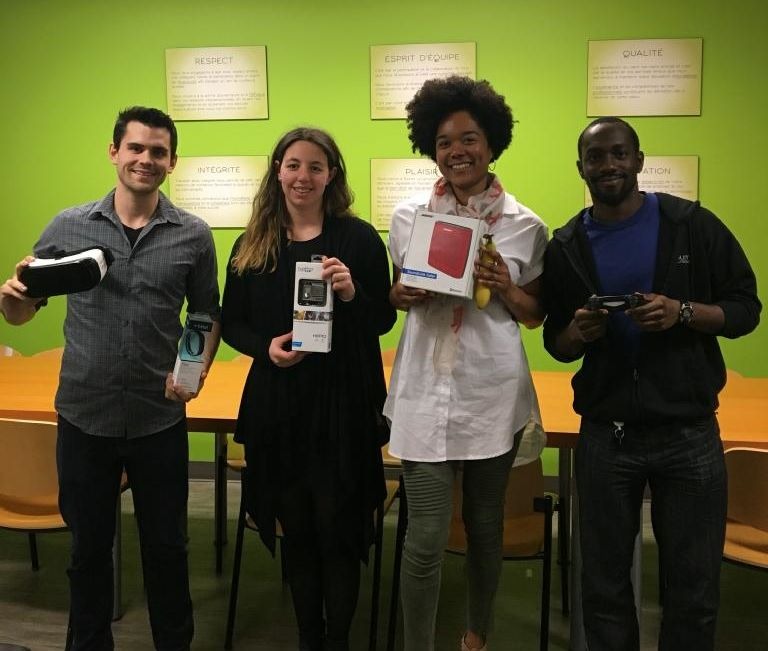A few months ago, we had our first hackathon. It was a no-holds bar (i.e. no rules) contest where everyone at Insum was given the opportunity to create cool applications. They were encouraged to use new technology and solve a business problem.
I cautiously wrote everyone at Insum, not our developers. This was very important as most teams were formed with a few developers and a non-developer. It provided the opportunity to work with new faces, as well as, learn and understand different thought processes. To make things more interesting, some teams were entirely remote, some onsite, and some mixed. This reflected Insum’s culture of having both remote and local employees.
Even on a weekend and during personal time we had a great turnout consisting of 6 teams with 3~4 people each. Teams submitted their ideas ahead of time and when Saturday morning rolled around, they started to hack away.
Development stopped on Sunday evening. On Monday, we had a company lunch where each team presented. Each presentation was a 5 minute pitch followed by a 5 minute Q&A from the judges. The results were pretty amazing and the judges had a hard time deciding on the top projects. The top three were:
#3 – Revolutionary Timesheet System
This project set out to modernize the current timesheet entry application used internally. Some of the objectives were:
- Use the same data model and allow backward compatibility with the current system
- Allow the user to color code their projects and sort project entries via drag and drop
- Provide a quick visual of where the time is spent each day
- Minimize the number of clicks required.
- Autocomplete Search functionality for users with an extensive list of projects
The redesign and modern UI would save the user time by speeding up the process of entering time entries.
In a very short amount of time, the team managed to deliver a functional and beautiful working prototype.
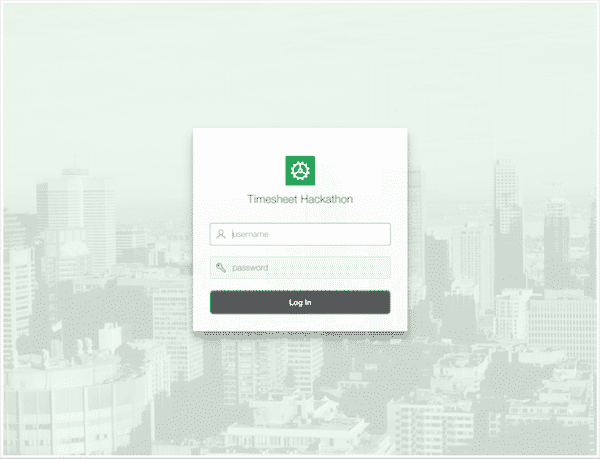
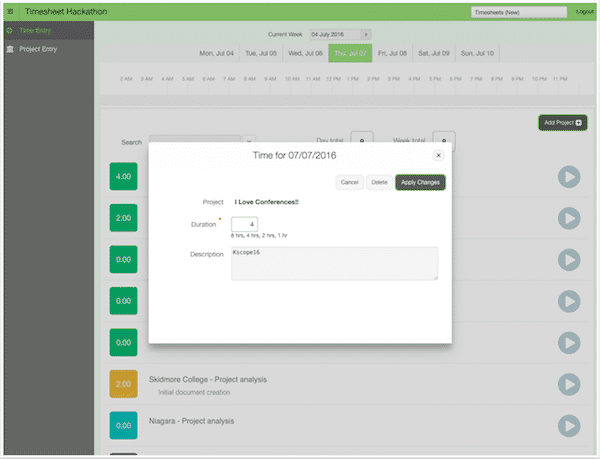
#2 – Visio-like Functionality in an Oracle APEX Page
This project brought Visio-like functionality to an APEX application using a javascript library called draw2d.
The screen was comprised of an icon palette and a process canvas. The number and type of icons on the palette are completely configurable. Users are able to select the appropriate icons and place them on the canvas with pinpoint precision. Relationships between icons (or nodes) can be established using connectors (or ports).
The real power of the application is everything the user constructs on the canvas can be stored in the database in the form of a JSON object. Node placement is identified using x and y coordinates and the relationship between nodes is also maintained in the same json object. Past process flows can be reconstituted from the database and redrawn on the canvas for further review or manipulation.
#1 – Oracle APEX & VR
This project was an opportunity to set aside the usual APEX work and bundle up as much cutting edge technology as the team could handle. Because the team consisted of two developers and two non-developers, innovation and storytelling are what drove the project. This helped in the creation of an engaging and fun application for both tech and non-tech people.
The project was a virtual reality game in which the user explored the surroundings of Insum Solutions’ office. When the 3D glasses are first worn, you start off in a city park. You move around the scenery with a PS4 controller while turning your head around to find hints.

These tips help you move from one scene to the other using speech recognition, based on the 3D text that appears on screen. As a user advances through the scenes, they finally end up in the Insum cafeteria where a beer awaits! The final voice command, Drink up, triggers a TV to play a music video with the author’s names.
The best part about this application was that it is wrapped up in an Oracle APEX application.
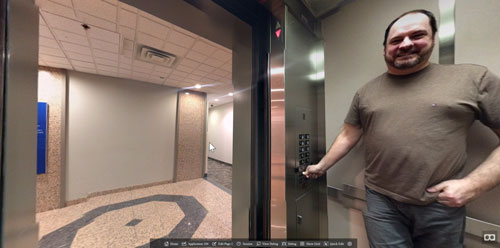
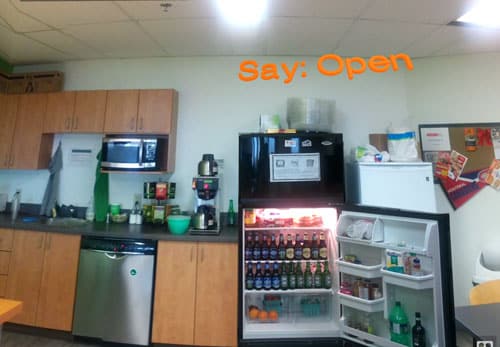
What’s Next for the Oracle APEX Hackathon?
This was the first time we hosted an Oracle APEX hackathon. Some applications may spawn internal projects or R&D work as they may be very useful for our customers. Our employees had a great time and enjoyed the opportunity to explore new technologies and tackle problems that they otherwise might not have had a chance to do.
We hope that this article and suggestions help inspire other organizations and groups to launch their own hackathons, specifically in the APEX community. If you have any follow up questions or suggestions, leave a comment and we’ll get back to you.
